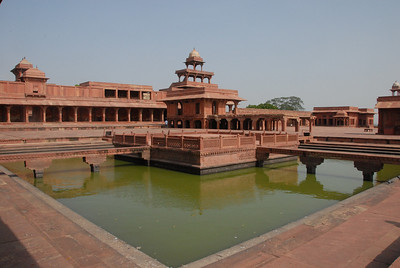
Due to a great monsoon rate at our luxurious hotel in Agra, Sean and I decided to spend three nights in this sultry city. The extra time afforded us the rare opportunity to relax, explore a major site per day and return to the Taj Mahal and enjoy it at our leisure.
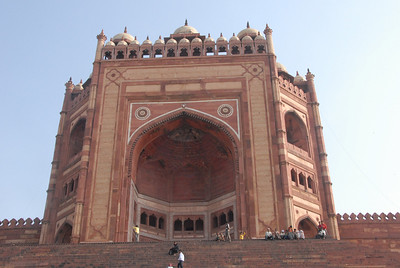
On our second day in Agra we took a nail-biting, 50 minute drive to the UNESCO World Heritage Site of Fatehpur Sikri. Fans of the writer Salman Rushdie may remember Fatehpur Sikri as the setting for his 2008 novel “The Enchantress of Florence.” Others may know it as the Mughal emperor Akbar’s “ghost city.” Due to a water shortage the settlement was abandoned in 1585, only 14 years after its construction and shortly after the death of Akbar. For being uninhabited for over four centuries Fatehpur Sikri remained in spectacular shape.
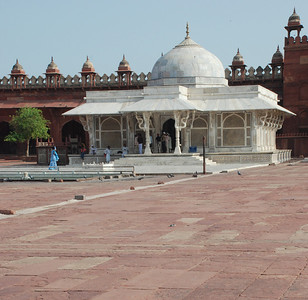
The Jama Masjid (Dargah Mosque), which we visited first, was completed in 1571. Inside its courtyard rested the marble tomb of Shaikh Salim Chisti, the saint whom the Emperor Akbar had consulted throughout his reign. Childless women now visit the mausoleum and tie colorful strings to the marble lattice screens. Each thread represents a request for the saint to grant children to these women.
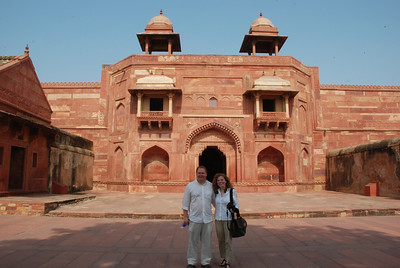
From the mosque we walked uphill to the palace complex. There we saw the large and ornate Palace of Jodh Bai, the emperor’s favorite wife and the smaller palaces of his Christian wife Mariam and another unnamed spouse. Other spectacular sandstone structures included the five-story Panch Mahal, a pavilion used by the court ladies, the Hall of Private Audience, the Hall of Public Audience and the 21-meter high Hiran Minar tower. Decorated with stone replicas of elephant tusks, the tower supposedly marked the final resting place of Akbar’s favorite elephant.
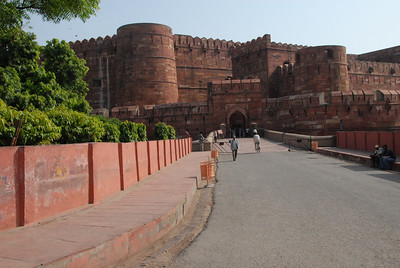
Back in Agra we tromped around another Akbar-inspired site, the 16th century Agra Fort. Unlike European forts, Indian forts invariably contained elaborate palaces, gardens, meeting halls and courtyards. They were cities within cities. Agra Fort proved to be no different.
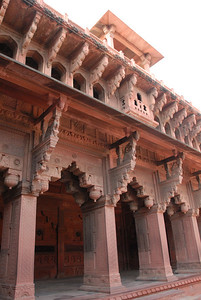
Akbar’s grandson, Shah Jahan, oversaw the completion of the fort. As a result, it displayed an abundance of white marble buildings, decorated in a fashion similar to his masterpiece, the Taj Mahal. It also possessed both Hindu and Moghul architectural influences.
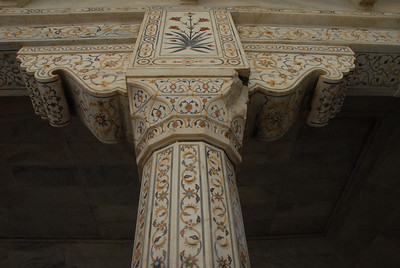
Thanks to his zealous, hardliner son Aurangzeb, Shah Jahan spent his last eight years under house arrest at the fort. From his window he could gaze out at the Taj Mahal on the opposite bank of the Yamuna River. Not much of a consolation for him but it makes a good story for the rest of us.